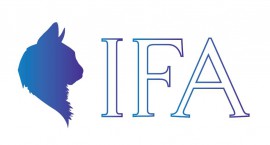Animal-Assisted Play Therapy® (AAPT)
Animal-Assisted Play Therapy® (AAPT)
"Playfulness, trust, and respect are the bridges that lead to healing and growth—not only between therapist and client, but also between humans and animals."
– Dr. Rise VanFleet
Animal Assisted Play Therapy® (AAPT) is a specialized form of therapy developed and defined by Dr. Rise VanFleet and Tracey Thompson. AAPT integrates the principles of play therapy and animal-assisted therapy to create a relational, playful, and client-centered intervention that promotes emotional healing, resilience, and personal growth.
In AAPT, play and the involvement of animals—often dogs, cats, or horses—are used intentionally and therapeutically. This approach emphasizes the importance of a sincere, mutually respectful relationship between the animal, therapist, and client. Animals are not merely present; they are active partners in the therapeutic process, and their well-being is considered as important as that of the client.
Key aspects of AAPT include voluntary participation of the animal, careful monitoring of the animal's consent and stress signals, and the integration of playfulness as a therapeutic tool. Sessions are often non-directive, allowing for natural interactions and emotional expression. The playful environment promotes a sense of safety, creativity, emotional expression, and the development of social and coping skills.
VanFleet and Thompson emphasize the importance of proper training for both the therapist and the animal handler to ensure competence in animal behavior, welfare, and therapeutic techniques. AAPT is deeply rooted in respect, empathy, and the belief that play and relationships are powerful catalysts for change.
Animal Assisted Play Therapy® is therefore a unique, ethically based approach that combines the transformative power of play with the healing potential of the human-animal relationship.
Key principles of Animal Assisted Play Therapy® (AAPT)
- Mutual respect and voluntary participation
- The animal is an active and equal partner, not a tool.
- The animal participates in activities voluntarily and has the right to refuse interaction at any time.
- Close, safe, and authentic relationship
- The relationship between the client, the animal, and the therapist is based on trust, empathy, and respect.
- The therapist consciously creates a safe environment for all participants.
- Playfulness as a therapeutic tool
- Playfulness is a key element—it promotes spontaneity, creativity, emotional openness, and healing.
- Playful activities are tailored to the client's needs and the animal's well-being.
- Knowledge and competence in animal behavior
- Therapists and caregivers must understand the animal's behavior, emotions, and signals (stress, consent, joy).
- The animal's well-being always comes first.
- Non-directive approach
- Interactions are often spontaneous to encourage the natural development of trust and self-expression.
- The therapist observes and gently supports the processes that arise naturally.
- Ethical principles and professionalism
- The work is carried out in accordance with high ethical standards in both therapy and animal welfare.
- Therapists must be qualified in both play therapy and animal-assisted therapy.
Homepage - International Institute for Animal Assisted Play Therapy



